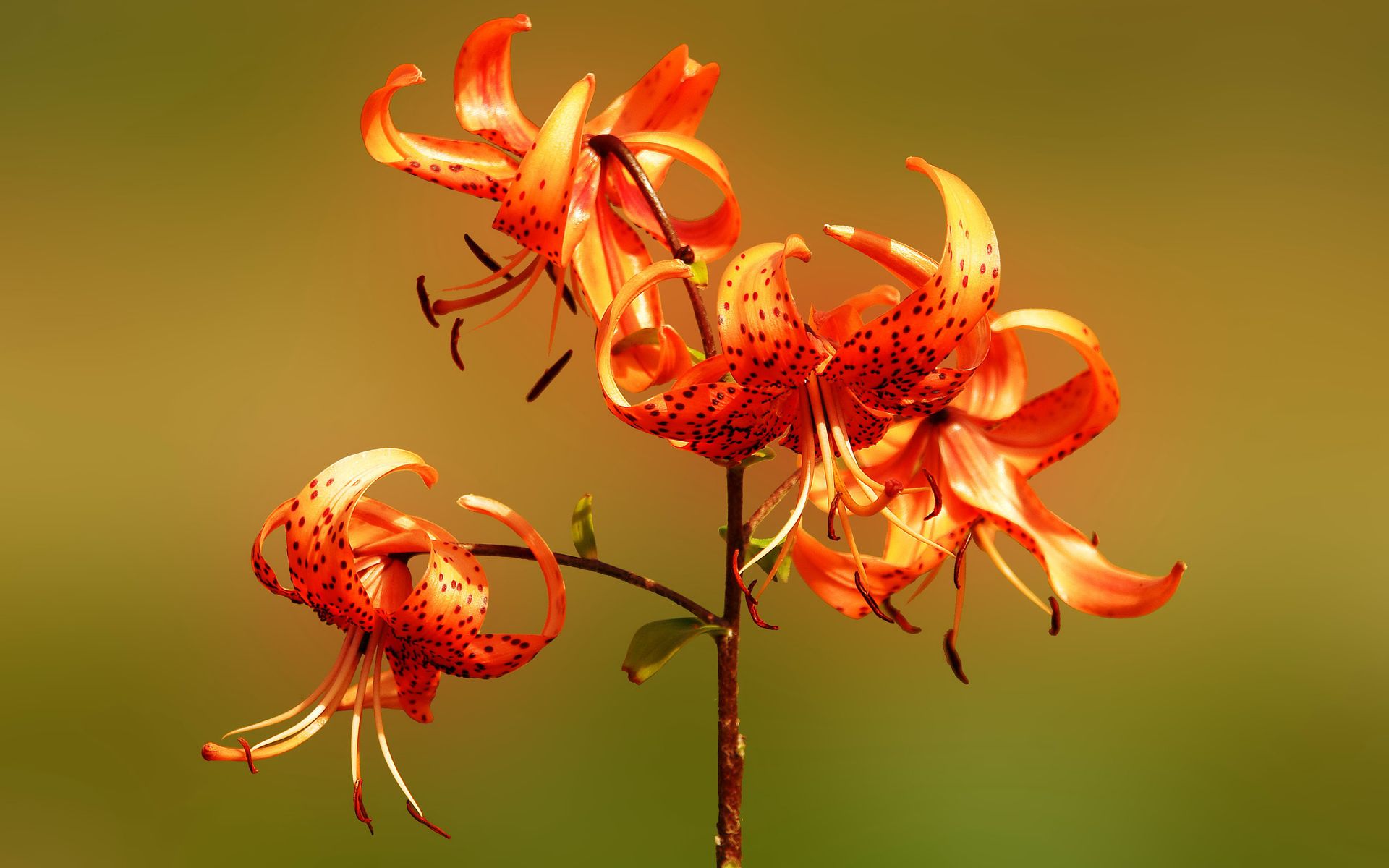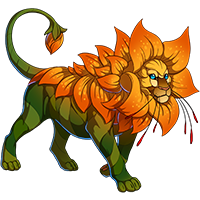

Krina
(#75337239)
rocky crags smudged with wild petalled fire
Click or tap to view this dragon in Predict Morphology.
Energy: 39/50

Expand the dragon details section.
Collapse the dragon details section.
Personal Style
Apparel







Skin

Scene

Measurements
Length
13.31 m
Wingspan
13.04 m
Weight
5775.76 kg
Genetics
Saffron
Jaguar
Jaguar
Carrot
Flair
Flair
Sunset
Glimmer
Glimmer
Hatchday
Breed
Eye Type
Level 1 Obelisk
EXP: 0 / 245


STR
8
AGI
6
DEF
6
QCK
6
INT
5
VIT
8
MND
6
Biography

кри́на тигри́цы
lilium tigrinum, lilium lancifolium, 卷丹/juan dān, 참나리/chamnari, oniyuri, himeyuri
curved tiger, tiger lily, lance-shaped leaves, curved red, true lily, demon lily, princess lily
L. lancifolium is a medium-sized species of Asiatic hybrid commonly known as the tiger lily, native to China, Japan, Korea, and the Russian Far East. It is widely planted as an ornamental because of its showy orange-and-black flowers and sporadically occurs as a garden escapee in North America. Like other true lilies of the Lilium genus, L. lancifolium flowers are borne on upright stems and bear lanceolate leaves. Flowers are odourless or lightly scented with upright bulbs and outward-facing petals. Each flower lasts a few days and if pollinated produces capsules with many thin seeds. L. lancifolium produces aerial bulblets, known as bulbils, in the leaf axils. These bulbils are uncommon in Lilium species and they produce new plants that are clones of the original plant. In general, these plants prefer moderately acidic or lime-free soils. As with other true lilies, L. lancifolium may carry a variety of viral diseases and can pass them on to other plant species. They are extremely toxic to cats and may cause vomiting, organ failure and even death.
Although the name tiger lily is ambiguous across several species, it is correctly applied to the Lilium lancifolium (syn. L. tigrinum) species alone. The name tiger lily may also be used to refer to fire lilies (L. bulbiferum), leopard lilies (L. catesbaei), Columbia lilies (L. columbianum), Hubei lilies (L. henryi), swamp lilies (L. superbum), and orange daylilies (Hemerocallis fulva). Botanists for many years considered L. tigrinum as the correct scientific name until it was determined that the older name L. lancifolium refers to the same species, and the latter became the accepted name. The botanic name Lilium is a Latin name derived from the Greek λείριον (leírion) generally assumed to refer to true, white lilies as exemplified by the Madonna lily. The word was borrowed from the Fayyumic Coptic dialect term hleri, from standard hreri, from Demotic hrry, from Egyptian hrṛt (flower, hreret). Ancient Greek "κρῖνον" (krīnon) was used by the Greeks for lilies of any color, and is the root word for lily in Old East Slavic and Russian крин (krin). See also Proto-Slavic *krina, speculated to be resultant to *kriti (“*to twist, to make curved; *to make circulate; to purchase”) also found in *krivъ (“curved”).
Tiger lilies are cultivated and wild foraged in Asia for their edible bulbs, which are starchy and slightly bitter. The dried bulbs are commonly used to flavour broth. They may be reconstituted and stir-fried, grated and used to thicken soup, or processed to extract starch. Their texture and taste draw comparisons with the potato, although the individual bulb scales are much smaller. In China, especially in Yixing, Huzhou and Longshan, tiger lilies are widely cultivated as a food source. In Taiwan, both the flower and bulbs are used as food, as with other related species of lily. The lily bulb is also sometimes used in Japanese cuisine. It may be used as an ingredient in a clear soup or suimono, or the boiled bulb may also be strained into purée. The tiger lily is typically known as the oniyuri in Japan, but the term himeyuri has been used ambiguously to refer to both L. lancifolium and L. concolor, c. 1895–1900. The himeyuri is described as quite palatable, according to the local literature of the time.
The tiger lily is used in the traditional medicinal practices of China, Taiwan, Japan, and South Korea. In Japan lily bulbs may be steamed and then flaked into scales for later use and consumption. A 19th century English source reported that lily flowers were said to be "efficacious in pulmonary affections, and to have tonic properties." Lily flowers and bulbs are especially eaten in the summer for their perceived ability to reduce internal heat.
In the Victorian language of flowers, lilies portray love, happiness, and affection, while orange lilies stand for desire, passion, and hatred. In China, the lily is traditionally a propitious sign of a blissful, long-lasting marriage. In Japanese hanakotoba the tiger lily is a symbol of wealth, pride and prosperity. The tiger lily is presented in Buddhism and other religions as a flower of mercy and compassion. Although all lilies are associated with the goddesses Aphrodite/Venus, Hera/Juno, and Gwan Yin/Kannon, tiger lilies are more connected to the aggressive aspects of the feminine.
Click or tap a food type to individually feed this dragon only. The other dragons in your lair will not have their energy replenished.
Feed this dragon Insects.
This dragon doesn't eat Meat.
Feed this dragon Seafood.
This dragon doesn't eat Plants.
Exalting Krina to the service of the Lightweaver will remove them from your lair forever. They will leave behind a small sum of riches that they have accumulated. This action is irreversible.
Do you wish to continue?
- Names must be longer than 2 characters.
- Names must be no longer than 16 characters.
- Names can only contain letters.
- Names must be no longer than 16 characters.
- Names can only contain letters.















